Abandoned bear cub rescued from California woods is now being raised by humans pretending to be bears
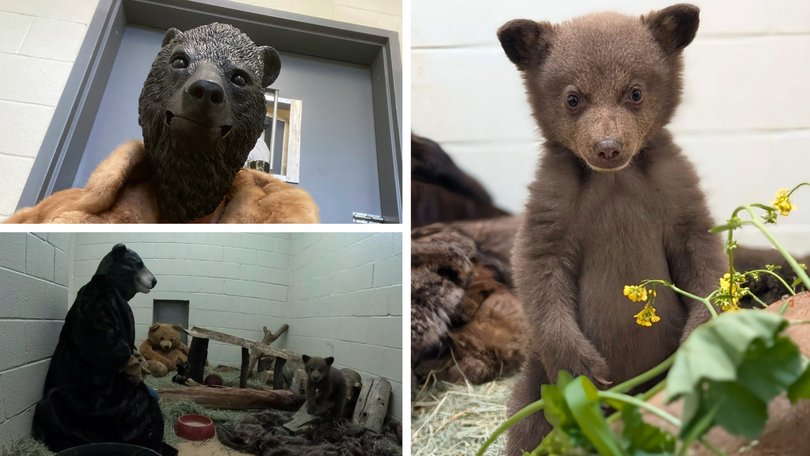
A tiny black bear cub was crying alone in the California woods, his mother nowhere in sight. He was less than two months old and weighed about three pounds.
Campers in Los Padres National Forest found the baby bear on April 12, and the campground host reported him to the California Department of Fish and Wildlife.
Initially, biologists monitored the environment, with the hope that the cub’s mother would return - but she did not. The cub couldn’t survive on his own in the wild, so he was brought to San Diego Humane Society’s Ramona Wildlife Centre.
Sign up to The Nightly's newsletters.
Get the first look at the digital newspaper, curated daily stories and breaking headlines delivered to your inbox.
By continuing you agree to our Terms and Privacy Policy.When he arrived, the cub was “extremely fragile,” said Autumn Welch, Wildlife Operations Manager at the centre.
“After going several days without nutrition, it was touch-and-go at first.”
Now, though, just over five weeks since he was rescued, the cub is thriving. He has gained nearly 10 pounds and has reached several developmental milestones - including learning to climb. The cub is the youngest black bear cub San Diego Humane Society has cared for.
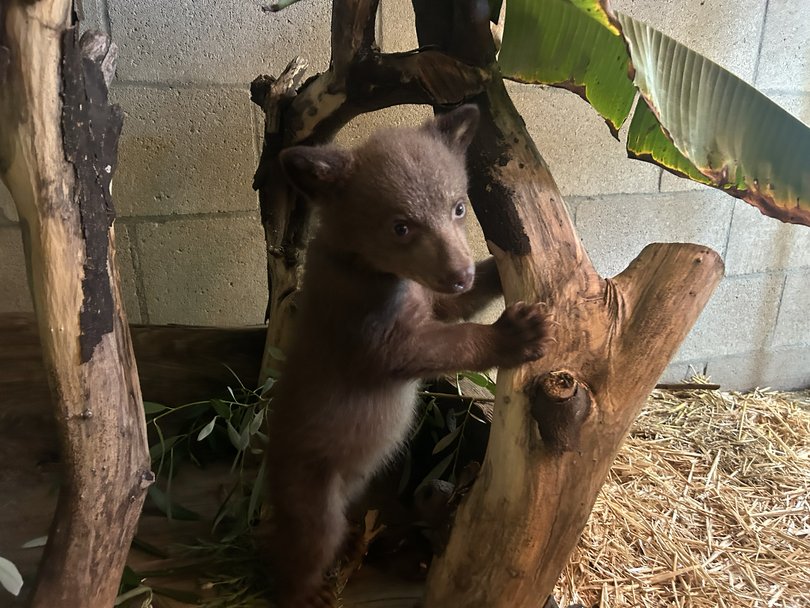
“I’m really proud of everyone here and what we’ve accomplished with this little cub,” Ms Welch said.
She and other staff at the wildlife centre have spent the past few weeks feeding the cub multiple times a day and sometimes overnight. They also engage him in targeted activities to ensure the cub is learning survival skills. The goal is to release him back into the wild in about a year.
“For the most part, by a year, a bear cub should be able to be fine on their own,” Ms Welch said.
“At that point, they’ve learned all the things they need to learn.”
When staff interact with the cub, they are usually garbed head-to-toe in a bear costume. They wear a bear mask and an oversized fur coat, as well as leather gloves. They also rub black-bear-scented hay they got from a local sanctuary all over.
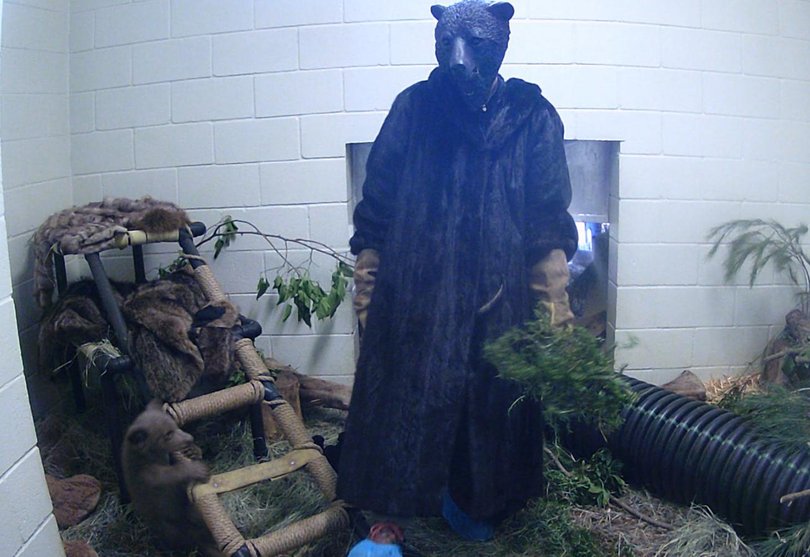
“We don’t want him touching our skin at all,” Ms Welch said, explaining that they are trying to prevent the cub from forming bonds with humans, which would disrupt his natural instincts and make it more difficult for him to survive in the wild.
“He never sees us as humans.”
“We’re dedicated to doing whatever we have to do to keep him wild,” she said.
Indeed, beyond their bear costumes, staff have also created two habitats for the cub - one inside and one enclosed outside - that mimic the wilderness.
They’ve built climbing structures made from natural trees, and they’ve covered the environments with leaf litter, dirt and branches. They also place stuffed bears around the habitat. The cub often cuddles up with the large one.
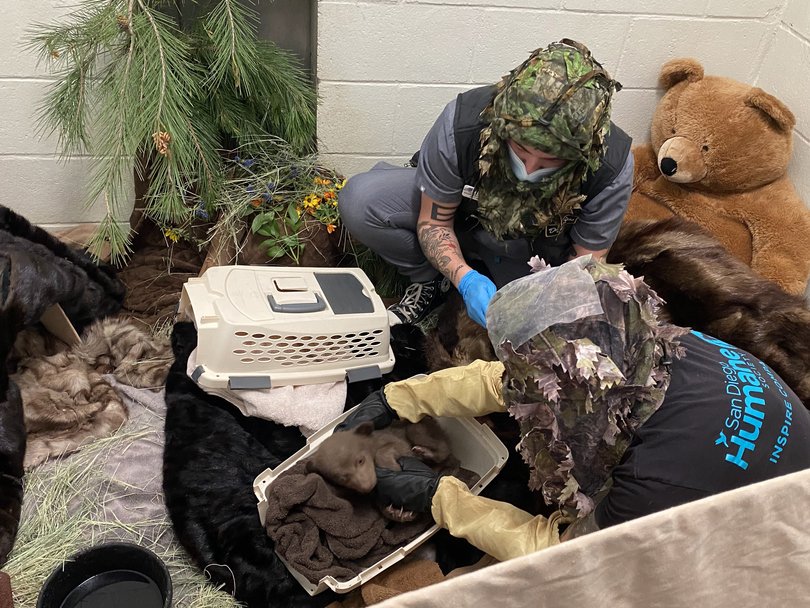
“It’s his surrogate mama,” Ms Welch said. “He would lay with her instead of laying out in the open and being exposed.”
The cub has reached several developmental milestones.
He has learned how to explore his habitat, dig through dirt to get insects, find shelter and make a nest. Ms Welch said the cub is very playful, and he has learned to keep himself busy when they’re not there to entertain him.
“Being able to entertain himself and play and explore is a milestone that’s really important,” Ms Welch said.
The cub has also recently made the switch from liquid to solid foods. He’s a big fan of fruit, and he also eats insects - mealworms, beetles, and crickets - as well as kibble and willow leaves.
“He will sample just about anything we give him,” said Ms Welch, adding that they also give him a specialised formula that contains similar components to his mother’s milk.
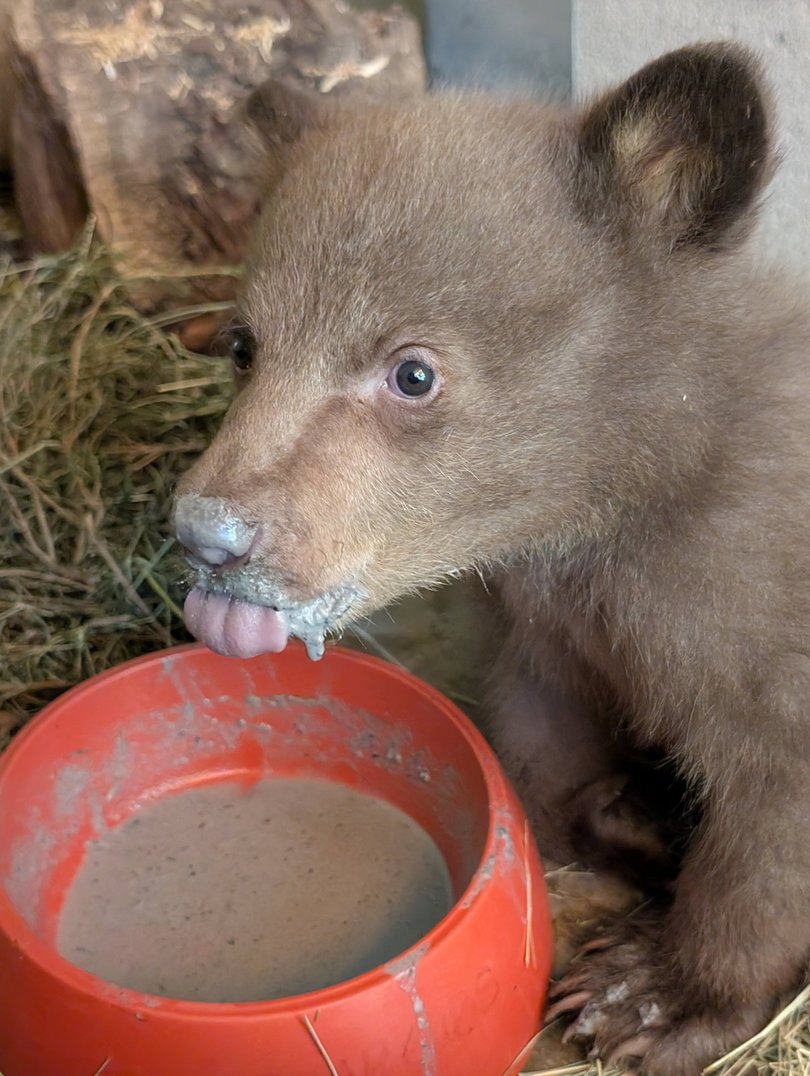
Staff also hide acorns around the cub’s rooms for him to locate and eat.
“He uses his nose to go find them,” Ms Welch said.
“It’s pretty amazing how quickly he learns, and you can see him processing it when he’s learning something new. He’s very thoughtful.”
Ms Welch said the risk of the bear being a danger to staff is very low, given his age and size. If he starts interacting with them more than he should, “we redirect him a lot with the stuffed animals, or the other things in his habitat,” she said.
“Sometimes you can just show him a tree branch and shake the leaves a little bit and his whole focus will be on that.”
Ms Welch said the cub’s case is rare. In the last five years, there have only been four cubs this young rescued and rehabilitated in California.
“Black bears are good mums, so it was very unusual for him to be alone with no sign of her,” Ms Welch said.
“It was a very unique circumstance.”
Looking after the baby bear requires extensive resources and time.
“It has been a pretty big commitment,” said Ms Welch, noting that the San Diego Humane Society does not receive state funding and relies on donations to treat wild animals in need.
“We couldn’t do it without the support that we get.”
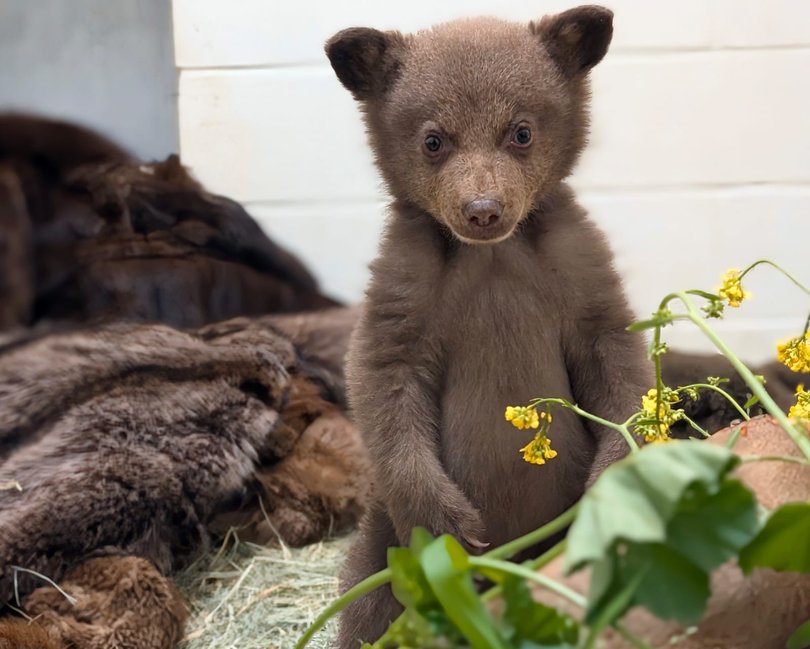
Ms Welch said she and her team are looking forward to watching the cub continue to grow and eventually go live in the wilderness.
“There is nothing like releasing a bear back to the wild,” she said.
“It’s an amazing feeling.”
© 2025 , The Washington Post
